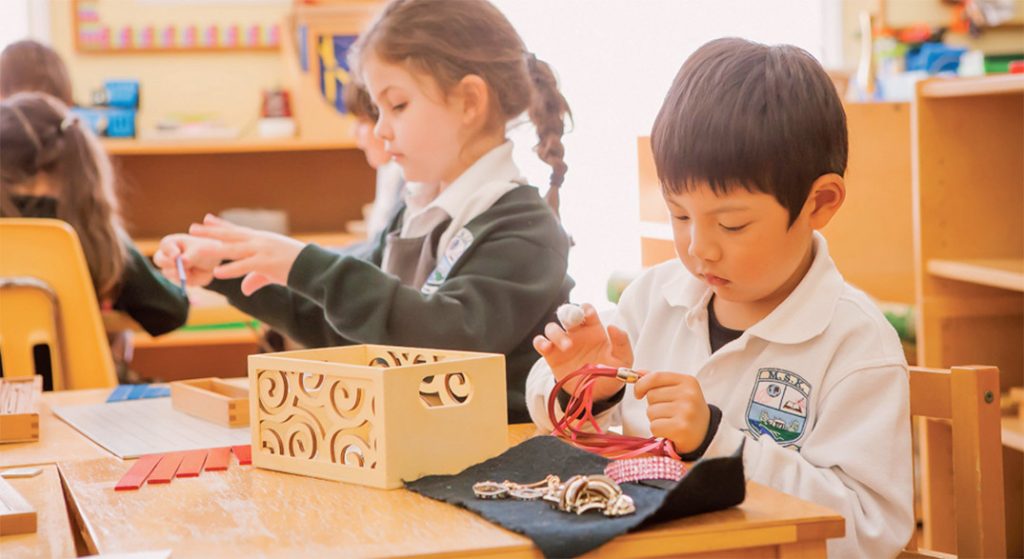
Enrolling your child in a preschool program is an exciting time for you and your family. Your child is growing out of their baby-phase and is beginning a new chapter of their lives — their formal education. By choosing a Montessori program, you are providing your child with the opportunity to be in a loving and encouraging environment where they will begin the work to become their personal best.
These tender years (two-and-a-half to six years of age) are an extraordinary time as children at this point in their lives are going through tremendous growth both physically, mentally and emotionally— they’re sponges! While students in the Casa program will be learning age-appropriate materials, the key focus of this stage of learning is to foster an appreciation for their accomplishments and develop self-awareness and respect for their peers and world around them.
Maria Montessori indicated that from birth to age six are “absorbent years.” Children at this time are compared to sponges as they absorb everything exposed to them. Within a Montessori environment, children are allowed to work at their own pace, explore freely on their own initiative and choose their own agenda for the day, with the guidance of their Directress (teacher). This makes learning like an open buffet where all materials are shared in a neat and orderly fashion around the classroom for each curriculum area. This beautiful exposure allows for children to gain independence, foster self-direction and develop self-discipline while catering to all learning styles.
Within a Casa classroom at MSK, students are allowed to work at their own pace, explore freely on their own initiative and choose their own agenda for the day, with the guidance of their Directress (teacher). Learning is like an open buffet where all the Montessori materials are exposed in a neat and orderly fashion around the classroom in each of the five curriculum areas— practical life, sensorial, mathematics, language and culture (see below). This exposure allows for children to gain independence, foster self-direction and develop self-discipline while catering to their specific learning needs.

These exercises help develop fine motor control, coordination and concentration which ultimately leads to more precise movement. The practical life skills taught in this area include:
Care of self (i.e. buttoning a jacket and/or being responsible for one’s own belongings).
Care of the environment (chores and being responsible for sharing others’ space).
Grace and courtesy (treating others with respect).
Exploring the world through the senses allows children to learn how to classify and categorize sizes, textures, colours and shapes. It is through these discoveries that lead children into an awareness and fascination of math and language. Children are beginning to make connections about the world around them – and it’s through their own direction which makes it more meaningful and lasting.


Students learn the difference between quantities and symbols with a sensorial approach. Addition, subtraction, multiplication and division are all introduced using manipulative materials and a very unique approach to learning.
From the moment children enter a Montessori program, the main emphasis is on communication using precise vocabulary. Students are taught to hear the phonetic sounds of the letters of the alphabet. This helps students learn how to form words, then sentences which becomes a culmination of writing and reading that comes naturally and consistently on a daily basis.


Geography, botany and zoology are some of the different areas that are covered in this curriculum area. Flags, coloured globes, puzzle maps and land and water forms are but some of the wonderful material the children are exposed to in this area. The world of culture is endless and is celebrated on a daily basis at MSK.


